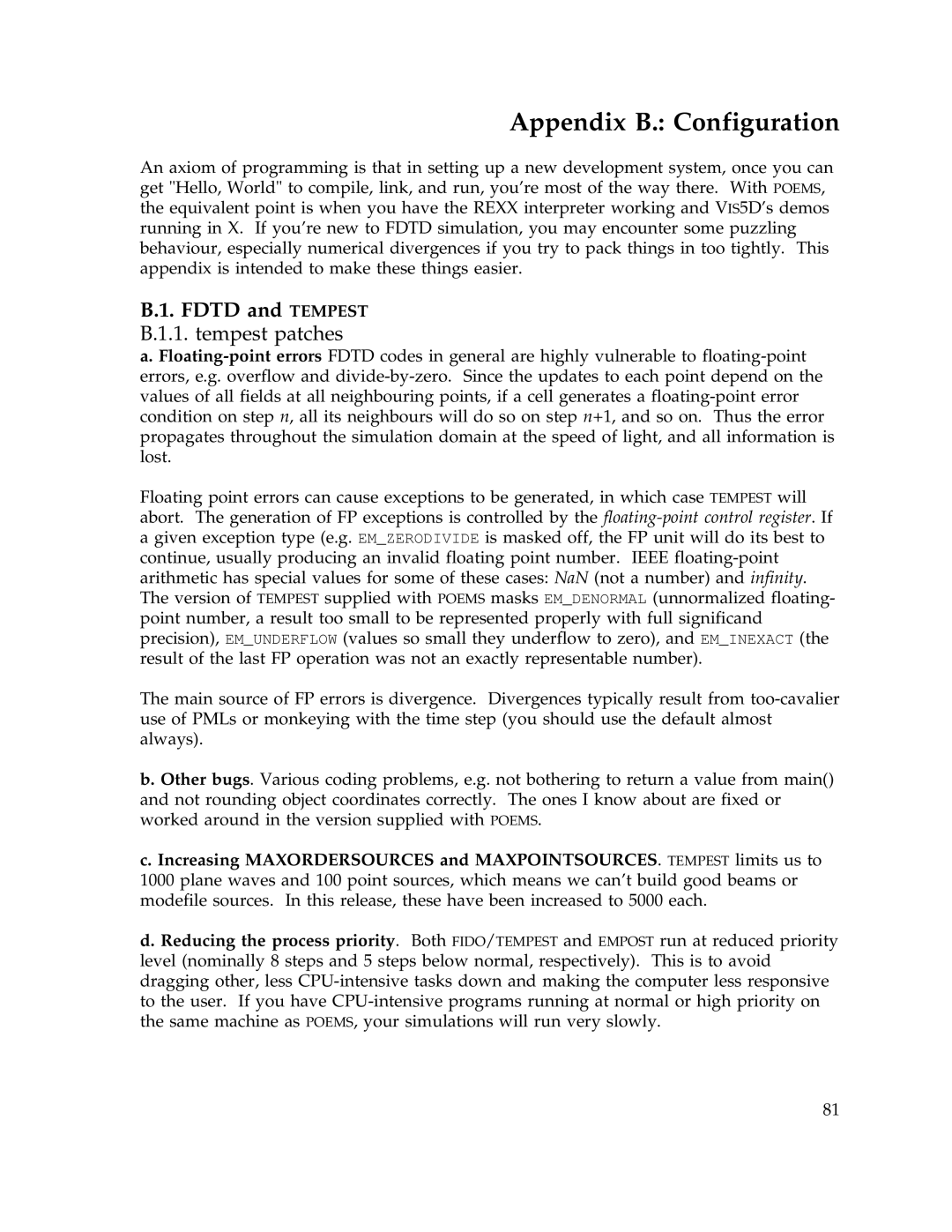Appendix B.: Configuration
An axiom of programming is that in setting up a new development system, once you can get "Hello, World" to compile, link, and run, you’re most of the way there. With POEMS, the equivalent point is when you have the REXX interpreter working and VIS5D’s demos running in X. If you’re new to FDTD simulation, you may encounter some puzzling behaviour, especially numerical divergences if you try to pack things in too tightly. This appendix is intended to make these things easier.
B.1. FDTD and TEMPEST
B.1.1. tempest patches
a.
Floating point errors can cause exceptions to be generated, in which case TEMPEST will abort. The generation of FP exceptions is controlled by the
The main source of FP errors is divergence. Divergences typically result from
b. Other bugs. Various coding problems, e.g. not bothering to return a value from main() and not rounding object coordinates correctly. The ones I know about are fixed or worked around in the version supplied with POEMS.
c. Increasing MAXORDERSOURCES and MAXPOINTSOURCES. TEMPEST limits us to 1000 plane waves and 100 point sources, which means we can’t build good beams or modefile sources. In this release, these have been increased to 5000 each.
d. Reducing the process priority. Both FIDO/TEMPEST and EMPOST run at reduced priority level (nominally 8 steps and 5 steps below normal, respectively). This is to avoid dragging other, less
81
